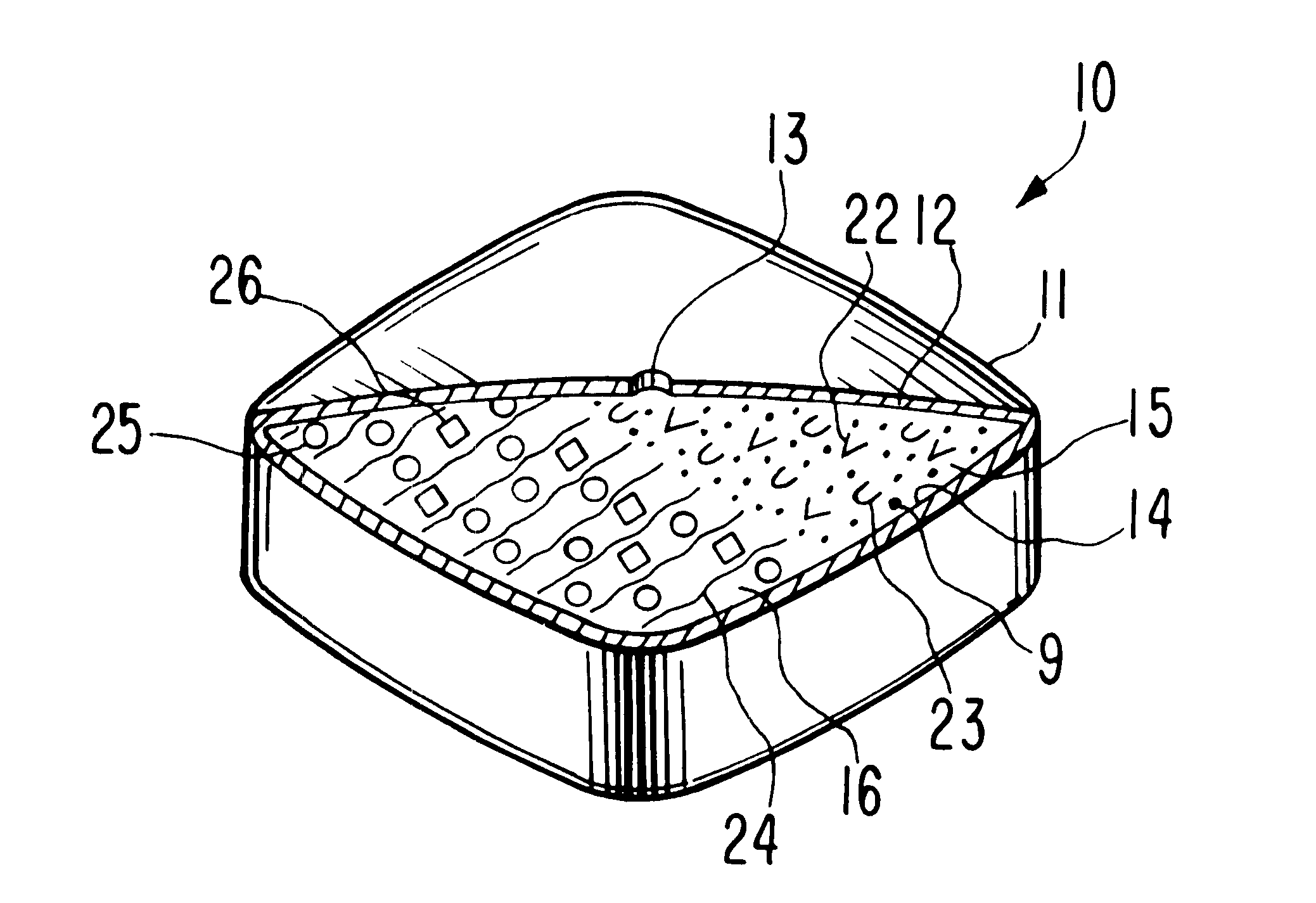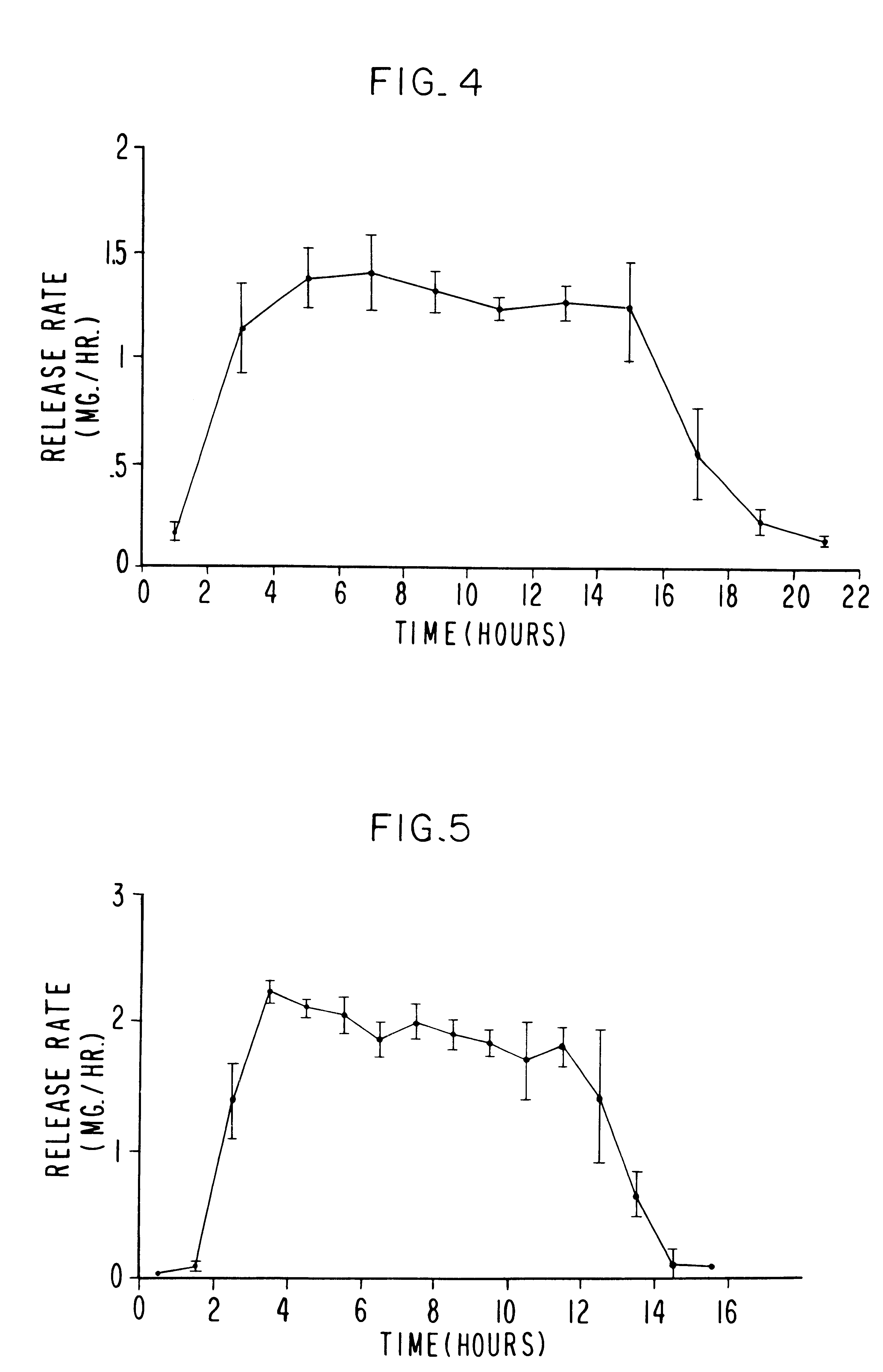Method for lowering blood glucose
a blood glucose and blood glucose technology, applied in the direction of osmotic delivery, drug composition, metabolic disorders, etc., to achieve the effect of stimulating insulin, increasing the concentration of insulin, and increasing the number of insulin receptors
- Summary
- Abstract
- Description
- Claims
- Application Information
AI Technical Summary
Benefits of technology
Problems solved by technology
Method used
Image
Examples
example 1
An oral dosage form, adapted, designed and shaped as drug delivery system for admittance into the gastrointestinal tract of a patient in need of glipizide is manufactured as follows: first, 369 g of pharmaceutically acceptable hydroxypropylcellulose comprising a 60,000 average molecular weight is passed through a 20 mesh screen, followed by passing through a 40 mesh screen 162 g of pharmaceutically acceptable polyvinylpyrrolidone comprising a 40,000 average molecular weight. Next, the two screened ingredients are blended with 66 g of glipizide to form a homogeneous blend. The blend is suspended in a fluidized bed and sprayed with an atomized spray comprising an ethanol:water (70:30 vol:vol) solution until granules are formed of the three ingredients. The freshly prepared granules then are passed through a 20 mesh screen. Finally, the screened granulation is mixed with 3 g of magnesium stearate in a rollermill for 5 minutes.
Next, a separate hydrogel granulation is prepared as follows...
example 2
A dosage form adapted, designed and shaped as an osmotic delivery system is manufactured as follows: first, a glipizide composition is provided by blending together into a homogeneous blend 478 g of pharmaceutically acceptable polyethylene oxide comprising a 200,000 molecular weight, 66 g of glipizide and 54 g of pharmaceutically acceptable hydroxypropylmethylcellulose comprising a 11,200 molecular weight. Then, 425 ml of denatured anhydrous ethanol is added slowly with continuous mixing over 5 minutes. The freshly prepared wet granulation is screened through a 20 mesh screen through a 20 mesh screen, dried at room temperature for 16 hours, and again screened through a 20 mesh screen. Finally, the screened granulation is mixed with 1.5 g of magnesium stearate in a rollermill for 5 minutes.
Next, a hydrogel composition is prepared as follows: first, 412.5 g of pharmaceutically acceptable polyethylene oxide comprising a 7,500,000 molecular weight, 150 g of sodium chloride and 6 g of fe...
example 3
A therapeutic dosage form for administering glipizide is made as follows: first, 125 mg of glipizide is sieved through a No. 40 mesh sieve and dry mixed with 125 mg of sorbitol, 100 mg of hydroxypropylmethylcellulose, 25 mg of cellulose and 5 mg of sodium chloride. Then, the mixture is blended with ethanol into a uniform, doughy mass. The resulting dough is passed through a No. 20 mesh sieve to form damp granules. The granules are air dried overnight, then re-passed through a No. 20 mesh sieve. Next, the sieve composition is compressed into a 15 mm oval tablet tooling at 2 tons pressure. The resulting compressed cores comprising the homogenous glipizide formulation is coated with about 50 mg of a 50 / 50 wt % mixture of cellulose acetate and polyethylene glycol deposited from a 95 / 5 wt % acetone and water solution. Then, the coated dosage form is air dried overnight, and an exit port drilled through the semipermeable wall connecting the exterior of the dosage form with the glipizide.
PUM
| Property | Measurement | Unit |
|---|---|---|
| pKa | aaaaa | aaaaa |
| weight percent | aaaaa | aaaaa |
| weight percent | aaaaa | aaaaa |
Abstract
Description
Claims
Application Information
 Login to View More
Login to View More - R&D
- Intellectual Property
- Life Sciences
- Materials
- Tech Scout
- Unparalleled Data Quality
- Higher Quality Content
- 60% Fewer Hallucinations
Browse by: Latest US Patents, China's latest patents, Technical Efficacy Thesaurus, Application Domain, Technology Topic, Popular Technical Reports.
© 2025 PatSnap. All rights reserved.Legal|Privacy policy|Modern Slavery Act Transparency Statement|Sitemap|About US| Contact US: help@patsnap.com



